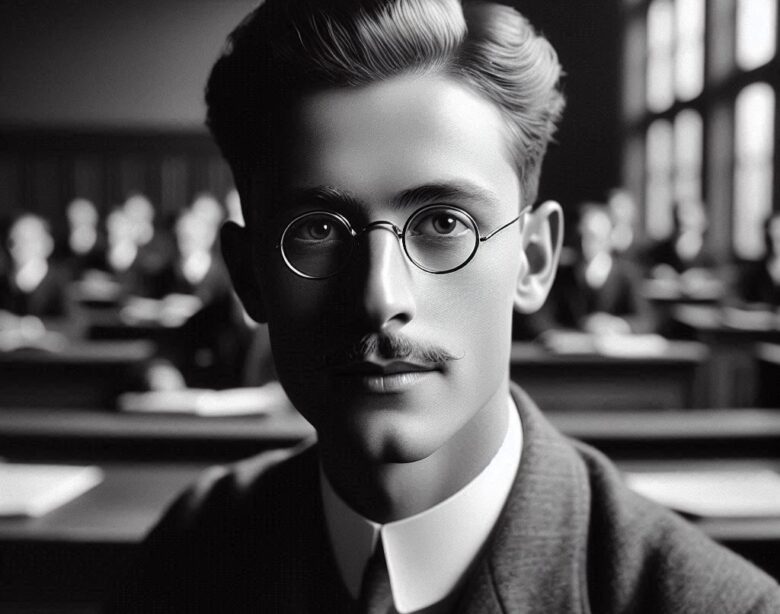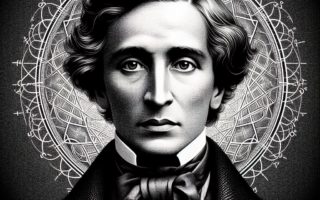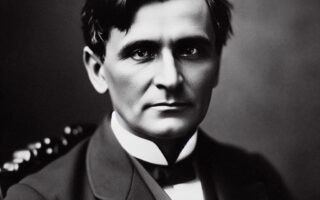George David Birkhoff
George David Birkhoff (1884–1944) was a towering figure in early 20th-century mathematics, whose groundbreaking work bridged the abstract realms of mathematics and the real-world phenomena of physics, engineering, and even art. Best known for his ergodic theorem and contributions to dynamical systems, Birkhoff left an indelible mark on mathematics and science. His efforts to unify disparate disciplines showcase his intellectual breadth and lasting influence.
Early Life and Education
Born in Overisel, Michigan, on March 21, 1884, Birkhoff showed an early aptitude for mathematics. He attended Harvard University, earning his bachelor’s degree in 1905, followed by a PhD from the University of Chicago in 1907. His doctoral dissertation, supervised by E.H. Moore, centered on differential equations, foreshadowing his later interest in dynamical systems.
After completing his PhD, Birkhoff embarked on a career that would see him make substantial contributions to various branches of mathematics. He taught at Princeton University before returning to Harvard, where he became a professor in 1912 and remained for the rest of his life.
Birkhoff’s Contributions to Mathematics
The Ergodic Theorem
Birkhoff’s ergodic theorem, published in 1931, is one of his most celebrated contributions. This theorem addresses the behavior of dynamical systems over time, particularly in statistical mechanics. The theorem provides a rigorous foundation for the concept that time averages and space averages of certain physical systems are equivalent under specific conditions.
For example, in a gas-filled container, molecules move randomly. The ergodic theorem demonstrates that the statistical properties of the gas can be determined by observing the motion of a single molecule over a long time or by examining the ensemble of molecules at a given instant. This work laid the groundwork for modern chaos theory and dynamical systems, profoundly influencing physics and mathematics.
Dynamical Systems and Celestial Mechanics
Birkhoff extended the work of Henri Poincaré in the field of dynamical systems, focusing on problems in celestial mechanics. His book Dynamical Systems (1927) became a foundational text in the field, offering insights into the stability of systems such as planetary orbits.
He worked on the three-body problem, a classical challenge in celestial mechanics, contributing to the understanding of the motion of celestial bodies under mutual gravitational influence. His work provided new methods for studying the stability of such systems, influencing fields ranging from astrophysics to orbital mechanics.
Aesthetic Measure
In an intriguing departure from pure mathematics, Birkhoff developed a mathematical theory of aesthetics, formalized in his book Aesthetic Measure (1933). He proposed a formula for quantifying aesthetic value, \(M=O/C\), where \(M\) is the aesthetic measure, \(O\) is the order or complexity of the object, and \(C\) is its complexity. This theory attempted to quantify the balance between complexity and order that humans find aesthetically pleasing.
While controversial, this work demonstrated Birkhoff’s interdisciplinary approach and his belief in the applicability of mathematical principles beyond traditional boundaries. His theory influenced discussions in art, music, and design, showcasing mathematics as a universal language.
Polynomial and Differential Equations
Birkhoff also made significant contributions to the study of differential equations and polynomials. His work on generalized orthogonal polynomials has applications in numerical analysis, quantum mechanics, and approximation theory. These studies advanced mathematical methods used in solving physical problems and improved the accuracy of numerical computations.
Impact on Science
Physics and Statistical Mechanics
The ergodic theorem’s implications for statistical mechanics cannot be overstated. By providing a mathematical foundation for the study of macroscopic properties of physical systems based on microscopic behavior, Birkhoff’s work bridged theoretical physics and applied science. This laid the groundwork for advancements in thermodynamics, quantum mechanics, and chaos theory.
Engineering and Applied Mathematics
Birkhoff’s work on differential equations and stability analysis had practical implications for engineering. From analyzing vibrations in mechanical systems to improving the understanding of fluid dynamics, his mathematical insights influenced fields critical to modern engineering.
Astronomy and Celestial Mechanics
Birkhoff’s extensions of Poincaré’s work in celestial mechanics helped scientists better understand planetary motion, orbital dynamics, and stability. His methods continue to inform contemporary research in astrophysics and space exploration, including the planning of satellite orbits and interplanetary missions.
Influence on Education and Legacy
Birkhoff was not only a prolific researcher but also a dedicated educator and mentor. He played a significant role in shaping the mathematics department at Harvard, training many students who went on to make their own contributions to mathematics and science. His influence extended to the broader mathematical community through his leadership roles in organizations such as the American Mathematical Society.
Awards and Honors
Birkhoff’s contributions earned him widespread recognition. He was awarded the prestigious Bôcher Memorial Prize in 1923 for his work on differential equations and became a member of the National Academy of Sciences. His impact was felt internationally, and his ideas resonated with mathematicians and scientists across disciplines.
Birkhoff’s Controversial Views
Despite his achievements, Birkhoff’s legacy is not without controversy. Some critics have pointed out his conservative views and nationalistic tendencies, which occasionally colored his interactions within the mathematical community. These aspects of his character remind us that even great thinkers are shaped by their times and personal biases.
The Lasting Legacy of George David Birkhoff
George David Birkhoff’s work exemplifies the power of mathematics to illuminate the complexities of the natural world and to extend its reach into seemingly unrelated domains like art and aesthetics. His contributions to dynamical systems, statistical mechanics, and celestial mechanics remain foundational, influencing contemporary research in mathematics, physics, and engineering.
Birkhoff’s interdisciplinary approach and his willingness to explore unconventional ideas reflect a mindset that continues to inspire mathematicians and scientists. Whether through the rigor of the ergodic theorem or the creativity of his aesthetic theory, Birkhoff demonstrated that mathematics is not just a tool for solving problems but also a means of understanding and appreciating the universe in all its complexity.
Conclusion
George David Birkhoff’s legacy as a mathematician and scientist is one of profound innovation and intellectual curiosity. His ability to bridge abstract mathematics and real-world applications, combined with his interdisciplinary explorations, underscores his unique place in the history of mathematics and science. From celestial mechanics to the nature of beauty, Birkhoff’s work has left an enduring mark, reminding us of the boundless potential of mathematical inquiry.
Please Visit Our Sponsors:
We only support vendors that we use ourselves in our home. The links below are our own links or affiliate links but know that we use all of these now, or have in the past. As the author/creator of this blog, I also tutor mathematics on Wyzant, sell on Etsy, create content on TpT, and learn Korean on Rosetta Stone.





